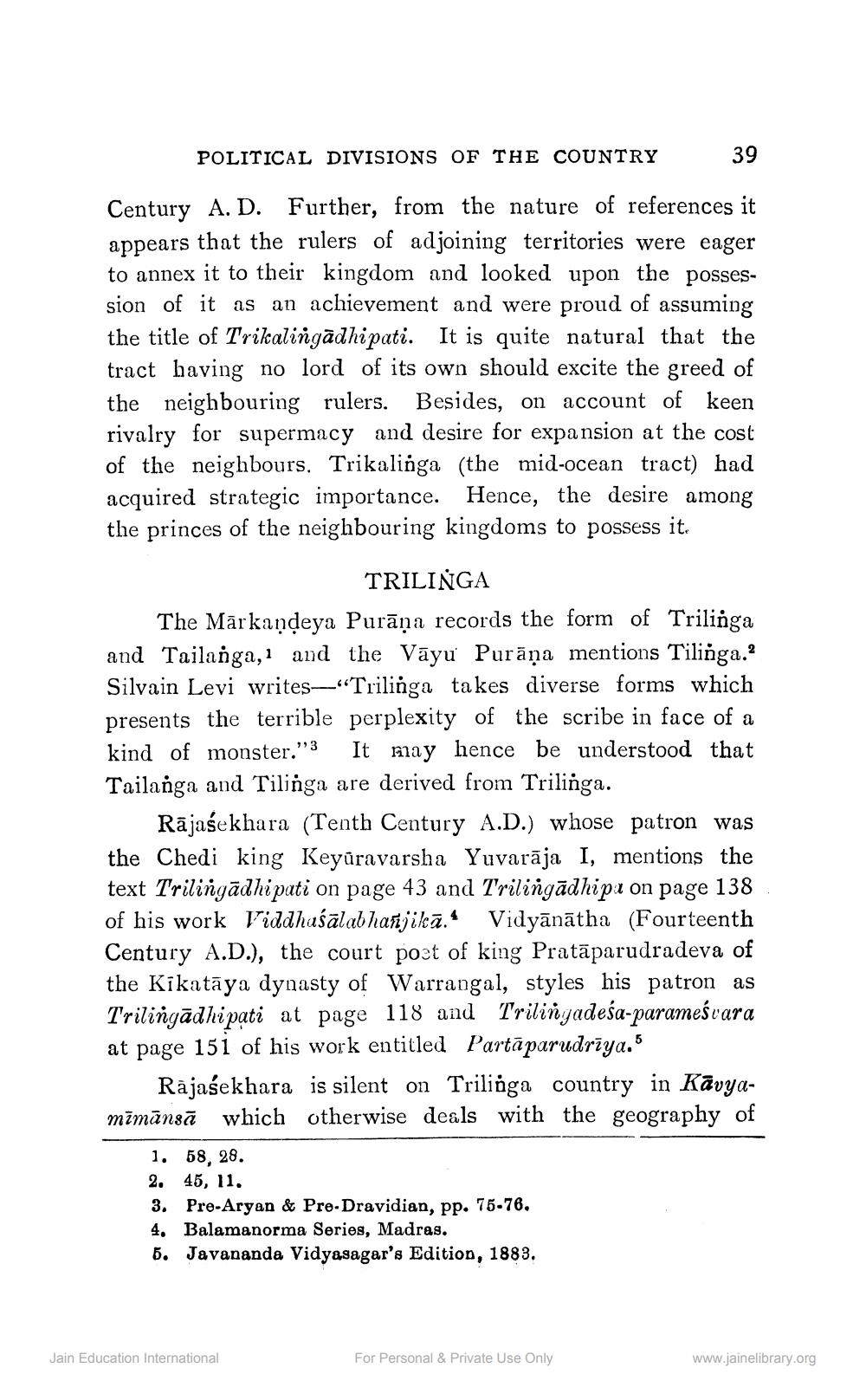________________
POLITICAL DIVISIONS OF THE COUNTRY 39 Century A. D. Further, from the nature of references it appears that the rulers of adjoining territories were eager to annex it to their kingdom and looked upon the possession of it as an achievement and were proud of assuming the title of Trikalingādhipati. It is quite natural that the tract having no lord of its own should excite the greed of the neighbouring rulers. Besides, on account of keen rivalry for supermacy and desire for expansion at the cost of the neighbours. Trikalinga (the mid-ocean tract) had acquired strategic importance. Hence, the desire among the princes of the neighbouring kingdoms to possess it.
TRILINGA The Mārkandeya Purāņa records the form of Trilinga and Tailanga, and the Vāyu Purāņa mentions Tilinga.? Silvain Levi writes—“Trilinga takes diverse forms which presents the terrible perplexity of the scribe in face of a kind of monster.”3 It may hence be understood that Tailanga and Tilinga are derived from Trilinga.
Rājasekhara (Tenth Century A.D.) whose patron was the Chedi king Keyūravarsha Yuvarāja I, mentions the text Trilingādhipati on page 43 and Trilingādhipi on page 138 of his work Viddhaśālabhanjikā. Vidyānātha (Fourteenth Century A.D.), the court post of king Pratāparudradeva of the Kikatāya dynasty of Warrangal, styles his patron as Trilingādhi pati at page 118 and Trilinyadeśa-parameśvara at page 151 of his work entitled Partāparudrīya.
Rajasekhara is silent on Trilinga country in Kavyamīmāngā which otherwise deals with the geography of
1. 58, 28. 2. 45, 11. 3. Pre-Aryan & Pre-Dravidian, pp. 75-76. 4. Balamanorma Series, Madras. 6. Javananda Vidyasagar's Edition, 1883.
Jain Education International
For Personal & Private Use Only
www.jainelibrary.org




